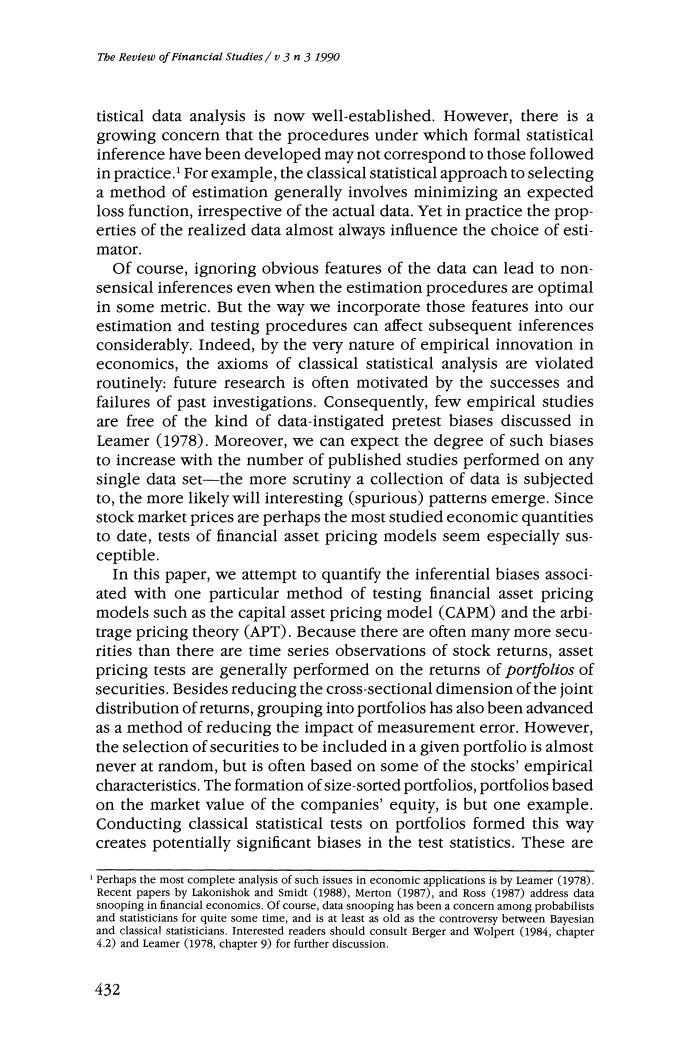正在加载图片...

Tbe Revtew of Financial Studies/v 3 n 3 1990 tistical data analysis is now well-established.However,there is a growing concern that the procedures under which formal statistical inference have been developed may not correspond to those followed in practice.For example,the classical statistical approach to selecting a method of estimation generally involves minimizing an expected loss function,irrespective of the actual data.Yet in practice the prop- erties of the realized data almost always influence the choice of esti- mator. Of course,ignoring obvious features of the data can lead to non- sensical inferences even when the estimation procedures are optimal in some metric.But the way we incorporate those features into our estimation and testing procedures can affect subsequent inferences considerably.Indeed,by the very nature of empirical innovation in economics,the axioms of classical statistical analysis are violated routinely:future research is often motivated by the successes and failures of past investigations.Consequently,few empirical studies are free of the kind of data-instigated pretest biases discussed in Leamer (1978).Moreover,we can expect the degree of such biases to increase with the number of published studies performed on any single data set-the more scrutiny a collection of data is subjected to,the more likely will interesting (spurious)patterns emerge.Since stock market prices are perhaps the most studied economic quantities to date,tests of financial asset pricing models seem especially sus- ceptible. In this paper,we attempt to quantify the inferential biases associ- ated with one particular method of testing financial asset pricing models such as the capital asset pricing model (CAPM)and the arbi- trage pricing theory (APT).Because there are often many more secu- rities than there are time series observations of stock returns,asset pricing tests are generally performed on the returns of portfolios of securities.Besides reducing the cross-sectional dimension of the joint distribution of returns,grouping into portfolios has also been advanced as a method of reducing the impact of measurement error.However, the selection of securities to be included in a given portfolio is almost never at random,but is often based on some of the stocks'empirical characteristics.The formation of size-sorted portfolios,portfolios based on the market value of the companies'equity,is but one example. Conducting classical statistical tests on portfolios formed this way creates potentially significant biases in the test statistics.These are Perhaps the most complete analysis of such issues in economic applications is by Leamer(1978). Recent papers by Lakonishok and Smidt (1988),Merton (1987),and Ross(1987)address data snooping in financial economics.Of course,data snooping has been a concern among probabilists and statisticians for quite some time,and is at least as old as the controversy between Bayesian and classical statisticians.Interested readers should consult Berger and Wolpert (1984,chapter 4.2)and Leamer (1978,chapter 9)for further discussion. 432